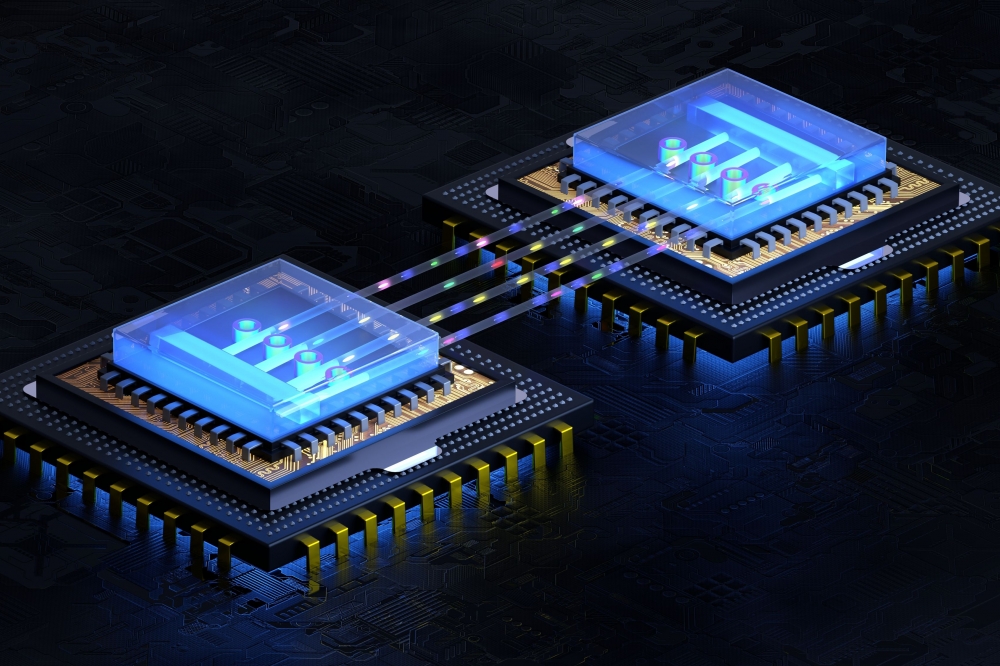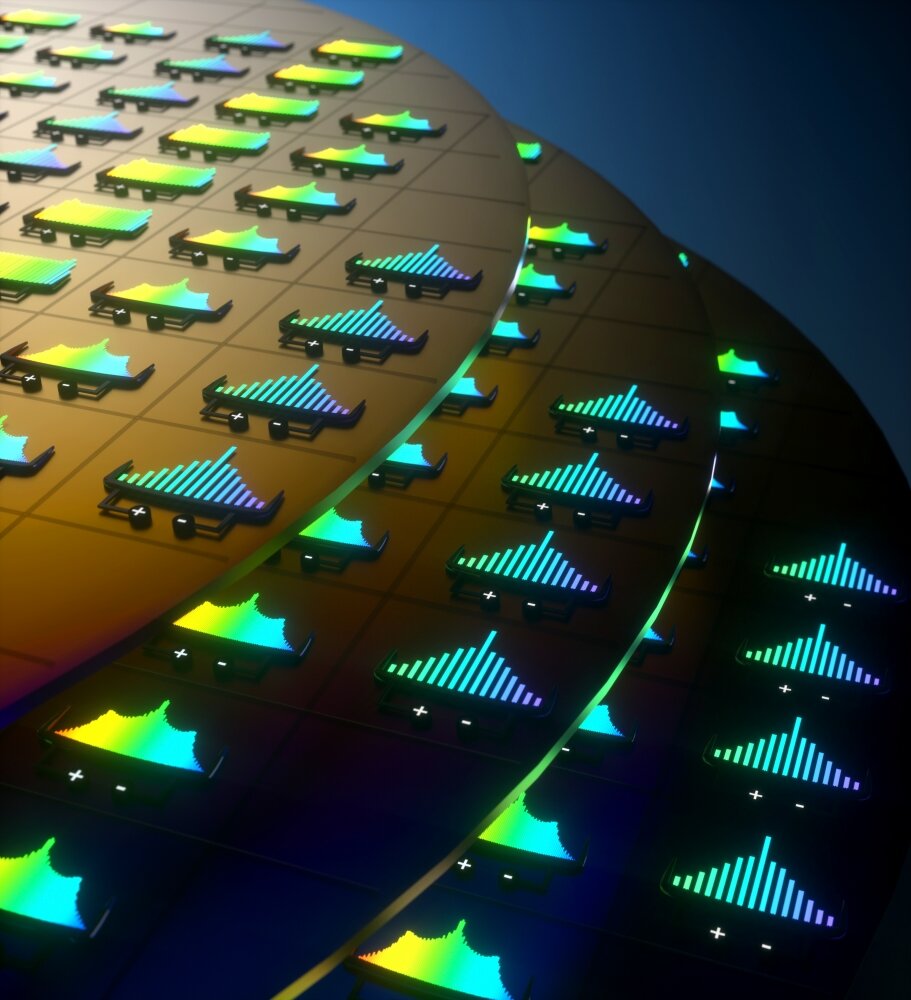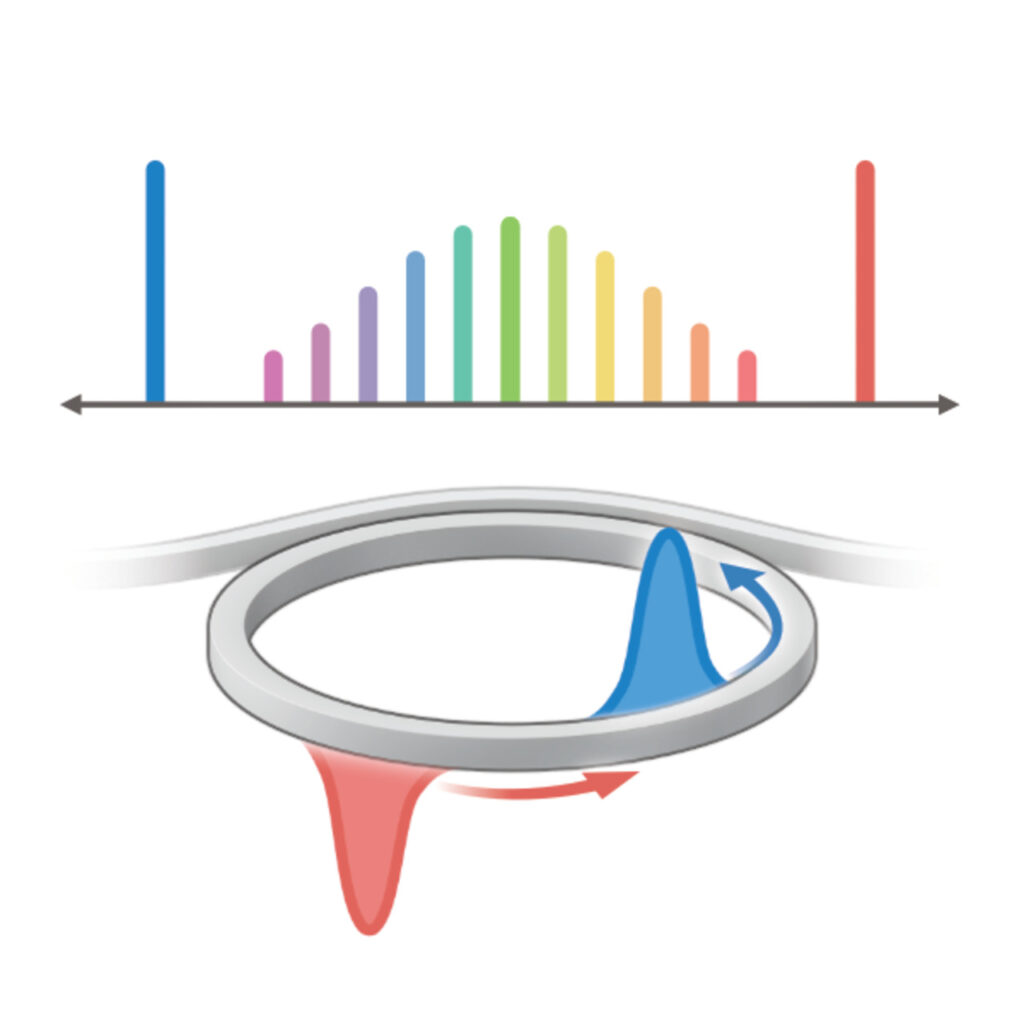High-Efficiency Microcomb Lasers from the University of Rochester Set to Revolutionize Consumer Electronics

Researchers at the University of Rochester have developed a groundbreaking type of laser that paves the way for new on-chip frequency comb generators, potentially revolutionizing consumer electronics.
Optical Frequency Combs and Their Challenges
Optical frequency combs are devices crucial for precise light measurement, significantly impacting fields like metrology, spectroscopy, and atomic clocks. These combs generate a spectrum of light with multiple coherent beams at evenly spaced frequencies, resembling the teeth of a comb. Despite their importance, integrating frequency comb generators into microchips has been challenging, limiting their use in everyday technology such as handheld electronics.

Innovative Development
In a study published in Nature Communications, the University of Rochester team presents new microcomb lasers that address these challenges with a simpler design, broadening their potential applications.
Understanding Microcombs
Optical frequency combs produce a series of discrete, equally spaced frequencies of light. This technology has numerous applications, from precision timekeeping in atomic clocks to enhancing the accuracy of spectroscopic measurements and improving the performance of telecommunications networks. However, creating compact, efficient versions of these combs, known as microcombs, that can be integrated into small devices has proven difficult.
Challenges in Microcomb Development
Scientists have been striving to develop microcombs that can fit on microchips. However, practical applications have been hindered by several issues:
- Low Power Efficiency: Traditional microcomb designs require significant energy to produce the desired spectrum of light.
- Limited Controllability: Adjusting the frequencies and maintaining stability can be complex and resource-intensive.
- Slow Mechanical Responses: Existing microcombs often rely on mechanical components that are slow to react to changes, limiting their usefulness in dynamic environments.
- Sophisticated System Pre-configuration: Setting up these systems usually involves complex procedures that are not suitable for everyday consumer electronics.

A Simplified Approach
Led by Professor Qiang Lin from the Department of Electrical and Computer Engineering and the Institute of Optics, the Rochester team developed a unique solution. They eliminated the traditional single-wavelength laser approach, which degraded system efficiency, opting instead for a method where the comb itself is amplified in a feedback loop within the system. This innovation ensures that all wavelengths are reflected and enhanced within a single element.
Advantages of the New Microcomb Lasers
The “all-in-one” micro comb laser developed by the Rochester team offers several significant advantages:
- Lower Power Demands: By simplifying the design and amplifying the comb within a feedback loop, the new microcomb lasers consume less power.
- Reduced Costs: The streamlined design reduces manufacturing complexity and cost.
- High Tunability: The feedback loop allows for easy adjustment of the comb’s frequencies, enhancing its versatility.
- Turnkey Operation: Unlike previous designs that required complex setup procedures, the new microcomb lasers are easy to operate. “With this method, we only need to switch on the power source, and we can control the comb directly,” says coauthor Zhengdong Gao, a PhD student in Lin’s lab.

Future Prospects
While the development of these microcomb lasers is promising, challenges remain, particularly in developing fabrication techniques to create tiny components with the necessary precision. Nonetheless, the researchers are optimistic about the future. They believe that their micro comb lasers could soon be used in a variety of applications, including:
- Telecommunications Systems: Enhancing data transmission rates and reliability.
- Light Detection and Ranging (LiDAR) for Autonomous Vehicles: Improving the accuracy and efficiency of distance measurement and object detection systems.
- Spectroscopy and Metrology: Providing more precise measurement tools for scientific research.
- Consumer Electronics: Potentially being integrated into devices like smartphones and wearable technology, enabling advanced features such as high-precision sensors and communication systems.
The work by the University of Rochester team represents a significant step forward in the development of micro comb technology, with the potential to bring sophisticated optical measurement capabilities into everyday devices.





Love it!